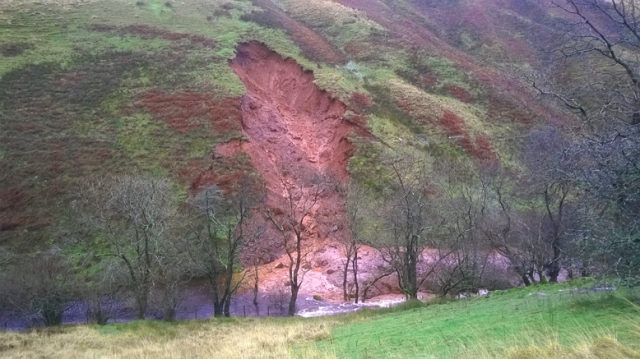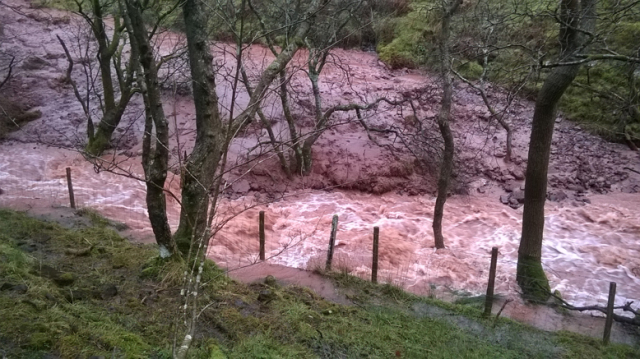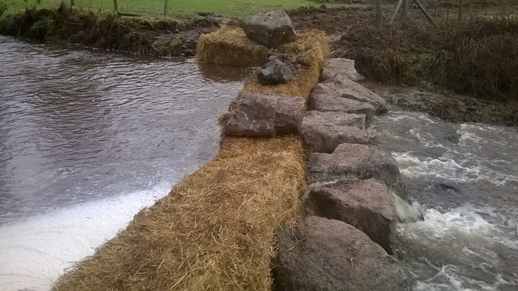The National Trust’s Environmental Adviser on whether change is accelerating

Impressive when seen from afar. The red soils flowing into the Nant Ddu river. But change has always happened. Is it accelerating?
The National Trust is one of the global leaders in addressing climate change. Environmental shifts threaten everything the Trust protects: its land, its structures and most of all its heritage, as examined in its recent 2015 report “Forecast Changeable.” Keith Jones is the Trust’s Environmental Adviser, who recently attended the landmark COP21 in Paris and strives to make the Trust as sustainable as possible. He devises and implements new efficiencies across the Trust and reports on his work at NTEnvironmentalWork.net. We’re pleased to be able to bring Keith’s work to The AngloFiles and examine the threats posed by climate change and the emerging practices the Trust is employing to combat it.
By Keith Jones, written on January 11 regarding flooding in Wales
Joe the area Ranger in the Brecon Beacons contacted Paul and myself today. He has a bit of a problem, which is quite a big land slide in the southern Beacons in Nant Ddu to be specific. The issue at this site is that Nant Ddu feeds water which will become drinking water for Cardiff via a lot of Dwr Cymru infrastructure and they would prefer the water not to be red and full of sediment. We are looking to suggest a more natural approach for stabilsiation (less infrastructure and machines in this area).
But this got me thinking. If like they say we have drier summers and wetter winters then our landscapes will change. The slopes of our valleys are the angle they are because they have sort of equalised to the type of rainfall pattern we have. Heavier and more concentrated rain and then change will come. Land slides are a natural feature of our landscapes but will the frequency increase? (one winter does not a re-modeled landscape make!). Will our famous V shapes valleys change in nature to adapt to the changing climate and its changing rainfall pattern? answers on a post card please!

Nant Ddu (Nant Ddu means black stream in Welsh… currently not black) the mud, clay and silt is being washed down stream to the reservoirs. Will this become a more permanent feature of our upper valleys? flooding, landslides, turbidity, cost…!
Yes grazing patterns, vegetation cover, mineral pans, drainage and so on have an impact in accelerating the flow of water. But weeks and weeks of heavy rain also has an impact? Makes you think if all that bracken in the image were covered with trees how would the soil have tolerated the rain better?




